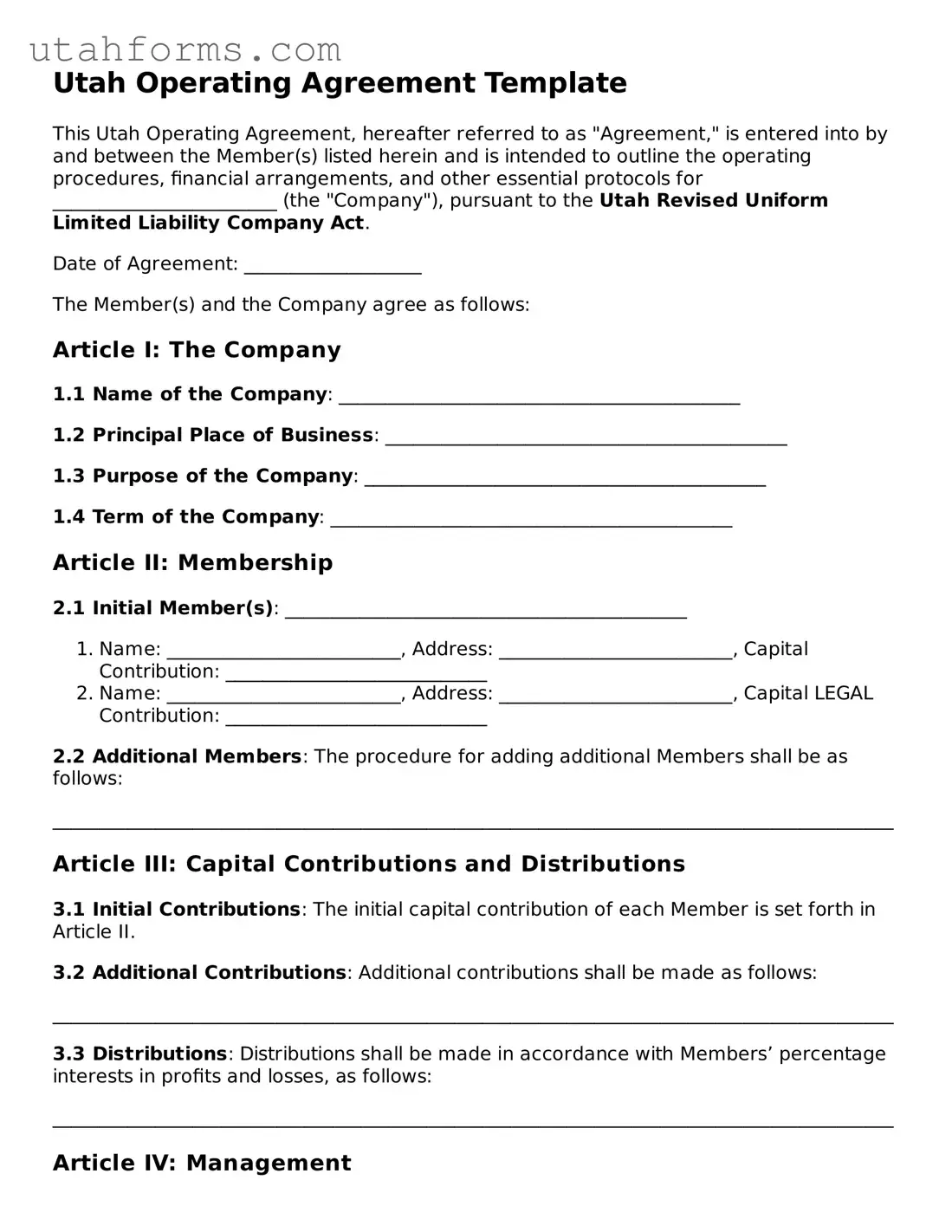Utah Operating Agreement Template
This Utah Operating Agreement, hereafter referred to as "Agreement," is entered into by and between the Member(s) listed herein and is intended to outline the operating procedures, financial arrangements, and other essential protocols for ________________________ (the "Company"), pursuant to the Utah Revised Uniform Limited Liability Company Act.
Date of Agreement: ___________________
The Member(s) and the Company agree as follows:
Article I: The Company
1.1 Name of the Company: ___________________________________________
1.2 Principal Place of Business: ___________________________________________
1.3 Purpose of the Company: ___________________________________________
1.4 Term of the Company: ___________________________________________
Article II: Membership
2.1 Initial Member(s): ___________________________________________
- Name: _________________________, Address: _________________________, Capital Contribution: ____________________________
- Name: _________________________, Address: _________________________, Capital LEGAL Contribution: ____________________________
2.2 Additional Members: The procedure for adding additional Members shall be as follows:
__________________________________________________________________________________________
Article III: Capital Contributions and Distributions
3.1 Initial Contributions: The initial capital contribution of each Member is set forth in Article II.
3.2 Additional Contributions: Additional contributions shall be made as follows:
__________________________________________________________________________________________
3.3 Distributions: Distributions shall be made in accordance with Members’ percentage interests in profits and losses, as follows:
__________________________________________________________________________________________
Article IV: Management
4.1 Management Structure: The Company shall be managed by:
- Member-Managed: ________________________________________________________________
- Manager-Managed: _______________________________________________________________
4.2 Powers and Duties of Managers: In a Manager-Managed company, the Managers shall have the power to:
__________________________________________________________________________________________
Article V: Voting
5.1 Voting Rights: Each Member’s voting rights are as follows:
__________________________________________________________________________________________
5.2 Matters Subject to Vote: Matters requiring a vote of the Members include:
__________________________________________________________________________________________
Article VI: Financial Matters
6.1 Fiscal Year: The fiscal year of the Company shall end on the last day of ______________________.
6.2 Financial Records: The Company shall maintain complete financial records and shall provide annual financial statements to all Members, prepared in accordance with _________________________ accounting principles.
Article VII: Dissolution
7.1 Dissolution Events: The Company may be dissolved upon the occurrence of any of the following events:
__________________________________________________________________________________________
7.2 Distribution of Assets: Upon dissolution, the assets of the Company shall be distributed as follows:
__________________________________________________________________________________________
IN WITNESS WHEREOF, the undersigned have executed this Operating Agreement as of the last date written below.
Member Signature: ______________________________ Date: ________________
Member Signature: ______________________________ Date: ________________
